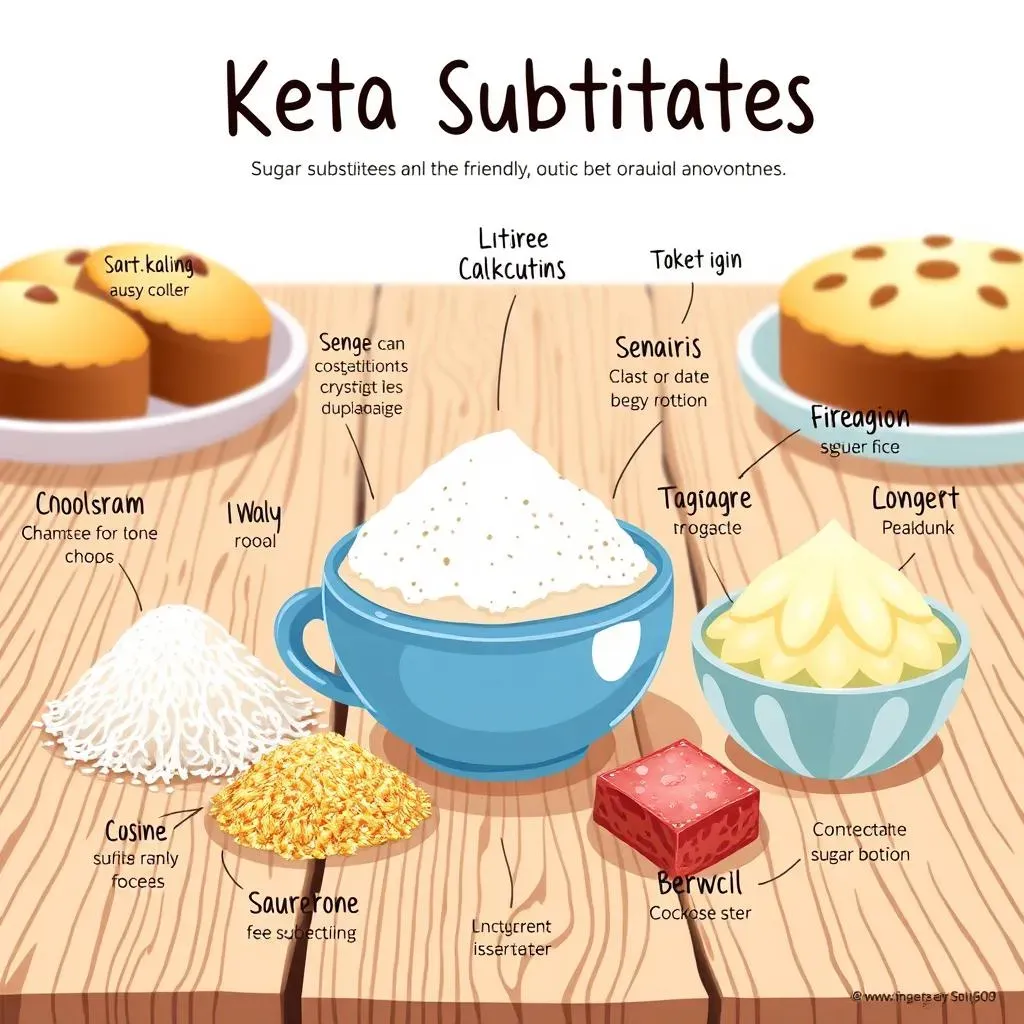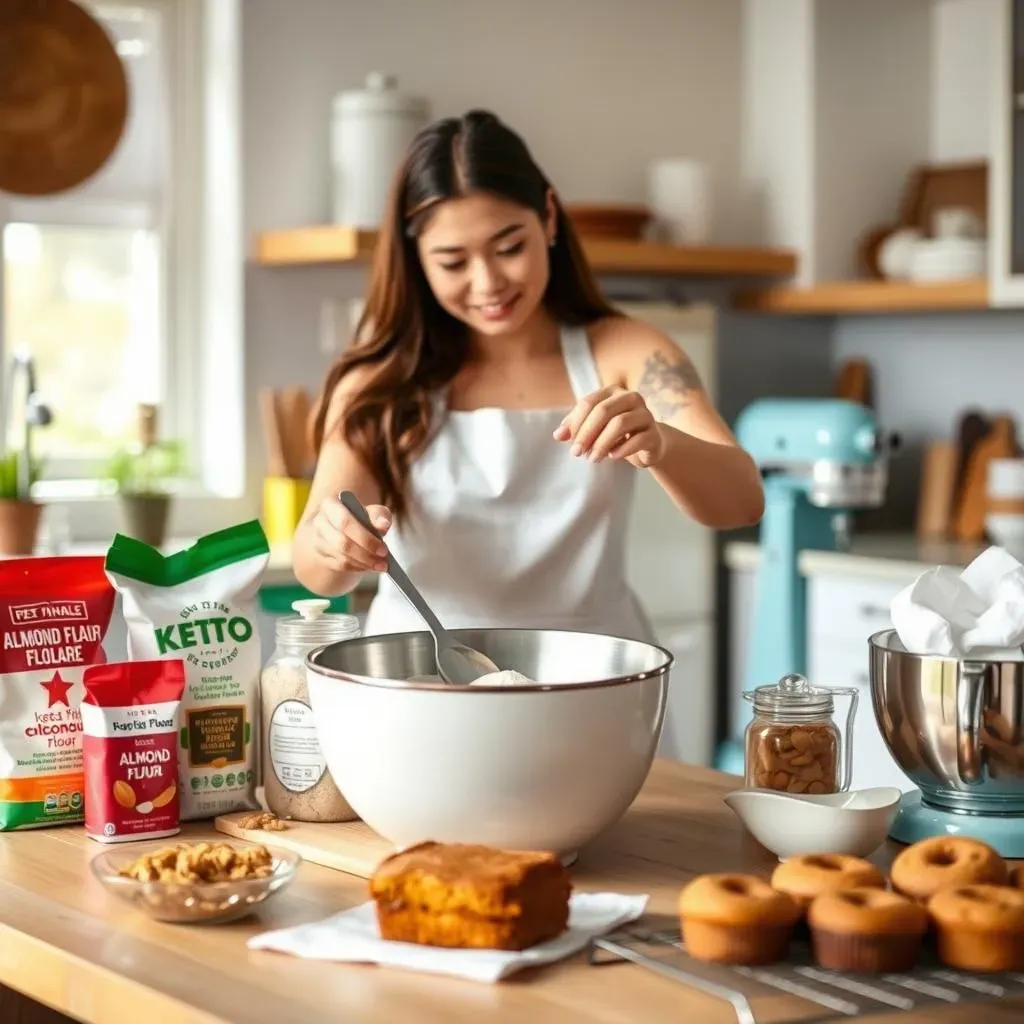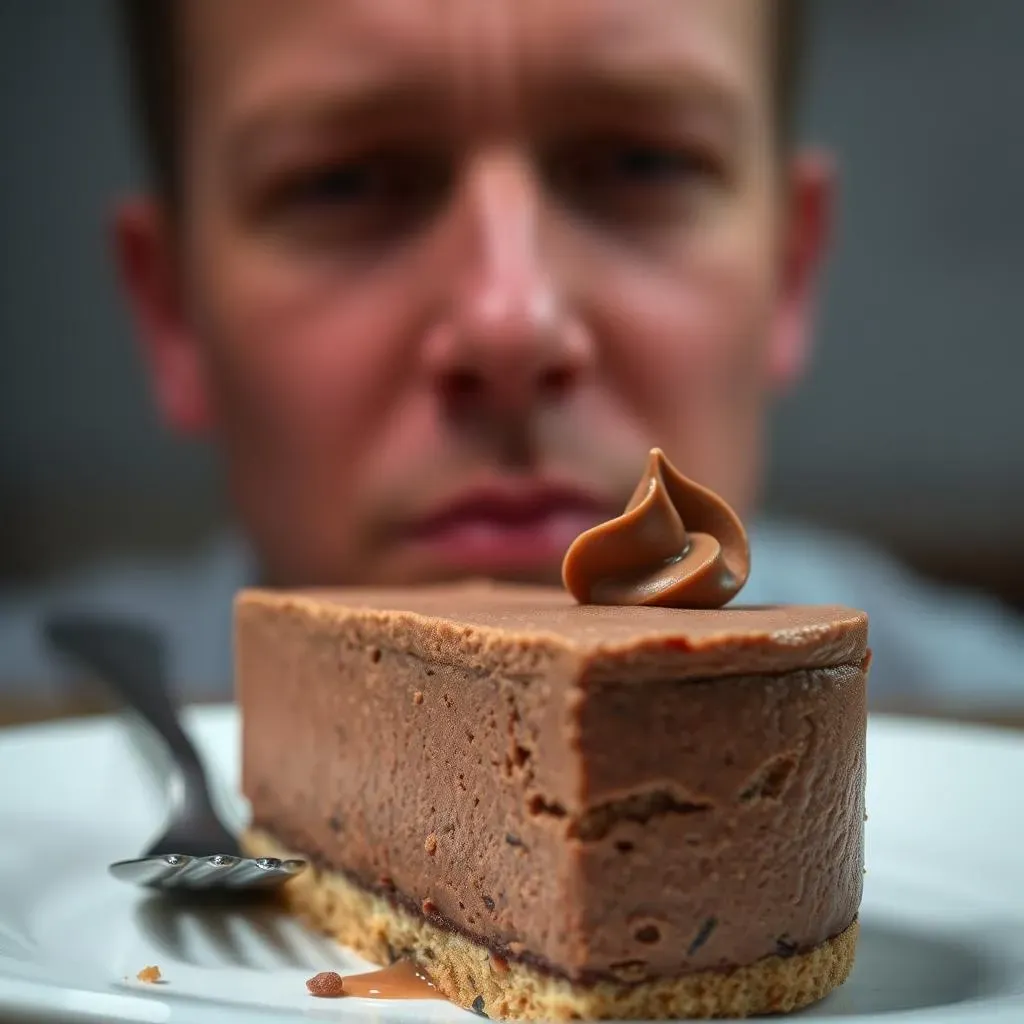Table of Contents
Let's be honest, the keto diet isn't exactly known for its decadent desserts. While cutting carbs can bring amazing health benefits, the trade-off often leaves us wondering: why do keto desserts taste so bad? It's a question many keto-enthusiasts grapple with, and it's a perfectly valid one. This article isn't about discouraging you from indulging in a sweet treat on your keto journey; it's about understanding *why* those sugar-free alternatives sometimes fall flat. We’ll explore the science behind sweetness, dissecting the role of sugar substitutes and their impact on taste. Then, we'll arm you with practical tips and tricks to elevate your keto baking game. Finally, we'll explore some delicious and satisfying alternatives to traditional keto desserts that might just surprise you. Get ready to uncover the secrets to delicious keto treats and conquer the question: why do keto desserts taste so bad—and what you can do about it!
The Science of Sweetness: Why Keto Desserts are Different
The Science of Sweetness: Why Keto Desserts are Different
Understanding the Sweetness Spectrum
So, you're diving into the world of keto baking, and you're hitting a snag. The desserts aren't tasting quite right. It's not just you; it's a common problem. The reason lies in the very nature of sweetness itself. Our brains are wired to expect a certain kind of sweetness, one provided by the glucose in regular sugar. Glucose triggers a specific response, a satisfying burst of sweetness that keto-friendly alternatives often struggle to replicate. Keto desserts, by definition, are low in carbs, meaning they lack the very building blocks of that familiar sweet taste. This absence of glucose forces us to rely on alternative sweeteners, each with its own unique flavor profile and limitations.
These substitutes often impart a different kind of sweetness, sometimes described as artificial, bitter, or even metallic. Think of it like this: Imagine you're used to the bright, juicy sweetness of an orange. Then, you try a grapefruit. It's still sweet, but it's a different type of sweet, with a more tart and less sugary profile. That’s essentially what's happening with keto desserts. We're swapping the familiar sweetness of sugar for something new, and our tastebuds need time to adjust. This adjustment period can be frustrating but is often temporary. For more tips on making moist keto cakes, check out our guide on how to make keto cakes moist.
Sweetener | Taste Profile | Potential Drawbacks |
|---|---|---|
Sugar Alcohols (Erythritol, Xylitol) | Mildly sweet, similar to sugar | Can cause digestive upset in large quantities |
Stevia | Intensely sweet, slightly bitter aftertaste | Can leave a lingering aftertaste |
Monk Fruit | Sweet, clean taste | Can be expensive |
The Role of Fat and Texture
Beyond the sweetness itself, the texture and overall composition of keto desserts play a significant role in their taste. Keto baking often involves a high proportion of fats, which can influence the flavor and mouthfeel. These fats contribute to the richness and creaminess of keto treats but can also lead to a slightly greasy or heavy texture if not balanced correctly. This is especially true for keto cakes, which can sometimes end up dense and dry if the right balance isn't achieved. Finding the right balance between fats, alternative sweeteners, and other ingredients is key to success.
For example, if you're aiming for a light and fluffy cake, you might need to experiment with different types of fat, such as coconut oil or avocado oil, and adjust the baking techniques. Or maybe you're intrigued by the possibility of keto zucchini cake? The possibilities are endless, and the experimentation is half the fun!
- Experiment with different fats (coconut oil, butter, avocado oil)
- Adjust baking techniques (e.g., using a lower temperature)
- Add flavor enhancers (vanilla extract, spices)
Sugar Substitutes: The Good, the Bad, and the Artificial
Sugar Substitutes: The Good, the Bad, and the Artificial
Navigating the Sweetener Maze
Okay, let's talk sugar substitutes. This is where things get tricky in the keto world. We're essentially trying to fool our taste buds into thinking they're getting the real deal, but without the carbs. The problem is, many of these artificial sweeteners don't quite hit the mark. Some leave a bitter aftertaste, others have a strange metallic tang, and some can even cause digestive upset. It’s a bit of a minefield, isn't it?
Think of it like this: You're trying to build a delicious cake, but instead of using the usual flour, you're using a substitute. Depending on the substitute you choose, your cake might end up tasting like cardboard, or it might be surprisingly good! It's all about finding the right substitute for the task. For instance, erythritol is often praised for its clean taste, while stevia can be a bit too intense for some. Experimentation is key here, my friend. And don't be afraid to mix and match different sweeteners to find the perfect blend for your recipe. Maybe you'll discover a winning combination that even non-keto eaters will love! For more keto baking inspiration, check out our how to make keto cakes guide.
Sweetener | Pros | Cons |
|---|---|---|
Erythritol | Mildly sweet, minimal aftertaste | Can cause digestive issues in large amounts |
Stevia | Intensely sweet, low calorie | Can have a bitter aftertaste for some |
Monk Fruit | Naturally sweet, clean taste | Can be expensive |
Allulose | Similar to sugar in taste and texture | Relatively new, less widely available |
Beyond the Basics: Exploring Other Options
Beyond the usual suspects like stevia and erythritol, there's a whole world of keto-friendly sweeteners to explore! Some less common options include allulose, which boasts a taste and texture remarkably close to regular sugar, and inulin, a fiber that adds sweetness and creaminess. These less-known sweeteners might require a bit more research, but they could be your secret weapon in creating truly delicious keto desserts.
Remember, the best sweetener is the one that works best for *you*. What tastes amazing to one person might be a disaster for another. Don't be afraid to experiment and find your personal favorites. And hey, if all else fails, there are always some delicious keto-friendly alternatives that don't involve baking at all! Thinking about trying a 3-ingredient keto cheesecake? It's surprisingly easy!
- Allulose: Similar to sugar in taste and texture
- Inulin: Adds sweetness and creaminess
- Yacon Syrup: Naturally sweet with a unique flavor
Recipe Remixes: Tips and Tricks for Keto Baking Success
Recipe Remixes: Tips and Tricks for Keto Baking Success
Mastering Keto Baking Techniques
So, you're ready to ditch the sugar but not the sweetness? Awesome! Keto baking is a journey, not a sprint, my friend. It's about finding creative solutions to overcome challenges. One of the biggest hurdles is replicating the texture of traditional baked goods. Regular flour provides structure and lightness; keto alternatives sometimes fall short. The key is understanding *why* those regular recipes work and adapting them to keto-friendly ingredients. We need to think like culinary engineers, carefully adjusting ingredients and techniques.
For instance, almond flour is a common keto swap, but it behaves differently than wheat flour. It absorbs liquids faster and can result in dry, crumbly goods if you're not careful. The solution? Add a little extra liquid, maybe some unsweetened applesauce or cream cheese, to keep things moist. Experimenting with different ratios is key to unlocking deliciousness! And don't be afraid to get your hands dirty – literally! The best keto bakers are often the ones who aren't afraid to tweak and adjust recipes until they achieve perfection. Want to explore the possibilities of different types of flour? Take a look at our guide on is cake flour keto-friendly.
- Understand how keto flours behave differently.
- Adjust liquid content for optimal moisture.
- Don't be afraid to experiment with ratios.
Ingredient Swaps: The Art of Substitution
Let's talk about ingredient swaps. This is where your culinary creativity truly shines. We're not just replacing sugar; we're reimagining the entire recipe. Think of it as a culinary puzzle. Each ingredient plays a specific role, and you need to find a keto-friendly alternative that fulfills that role effectively. For example, instead of using regular sugar, you might opt for erythritol, monk fruit, or a blend of both. But don't stop there; consider the other components, too. Instead of all-purpose flour, explore almond flour, coconut flour, or a combination. The right substitution can transform a mediocre keto dessert into a masterpiece.
Replacing eggs can also be tricky. They provide binding and structure, so omitting them can lead to a less-than-ideal result. Luckily, there are keto-friendly alternatives such as chia seeds or flaxseed meal mixed with water. These act as natural binders, helping to hold your dessert together. And remember, even small changes can make a big difference! A dash of vanilla extract can elevate the flavor profile significantly, while a pinch of salt can enhance the sweetness. Need more ideas for keto baking? Check out our suggestions on where can you buy keto cakes.
Regular Ingredient | Keto-Friendly Swap |
|---|---|
Sugar | Erythritol, Monk Fruit, Allulose |
All-Purpose Flour | Almond Flour, Coconut Flour, Oat Fiber |
Eggs | Chia Seeds/Flaxseed Meal |
Beyond the Bake: Other KetoFriendly Sweet Treats
Beyond the Bake: Other KetoFriendly Sweet Treats
No-Bake Bliss: Easy Keto Delights
Let's face it, sometimes you just don't have the time or energy for elaborate baking projects. That's where no-bake keto desserts shine! These simple treats often require minimal ingredients and preparation, making them perfect for busy weeknights or spontaneous cravings. Think creamy keto cheesecakes (check out our 3-ingredient keto cheesecake recipe for inspiration!), decadent chocolate avocado mousse, or refreshing chia seed pudding with berries and a touch of sweetener. The possibilities are as endless as your imagination!
The beauty of no-bake desserts lies in their adaptability. You can easily customize them to your liking, adding different extracts, spices, or toppings to create unique flavor combinations. A sprinkle of cinnamon, a drizzle of sugar-free chocolate syrup, or a dollop of whipped cream can transform a simple dessert into something truly special. And don't forget about the presentation! A little bit of effort in arranging your dessert can elevate the entire experience, making it feel even more indulgent.
- Chia Seed Pudding
- Chocolate Avocado Mousse
- Keto Fat Bombs
Beyond the Sweet: Savory Keto Options
Who says keto desserts have to be sweet? There's a whole world of savory keto treats waiting to be explored! Think cheese crisps, savory muffins with herbs and cheese, or even keto-friendly pizza bites. These options offer a satisfying alternative to traditional desserts, especially if you're not in the mood for something sweet. They can also be a great way to incorporate healthy fats and protein into your diet.
Savory keto options often focus on rich, umami flavors. Think creamy cheeses, salty nuts, and aromatic herbs. Experimenting with different spices and seasonings can unlock a whole new dimension of flavor. These savory treats can be just as satisfying as their sweet counterparts, offering a different kind of indulgence that's perfect for those who prefer a less sugary experience. For more ideas on keto-friendly baking, you might find our guide on how to make keto cakes helpful.
Savory Keto Treat | Key Ingredients |
|---|---|
Cheese Crisps | Cheese, herbs |
Savory Muffins | Almond flour, cheese, herbs |
Keto Pizza Bites | Cauliflower crust, cheese, toppings |
